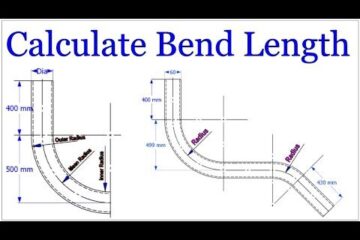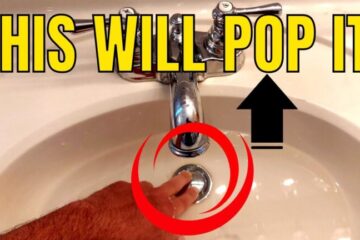Clogged kitchen drains can be a frustrating and inconvenient problem to deal with. When water refuses to drain properly, it not only disrupts your daily routine but also poses a potential risk for further damage to your plumbing system. In this article, you will explore effective methods to restore water flow in a clogged kitchen drain, allowing you to swiftly resolve this common household issue and get back to smoothly running sinks and a stress-free kitchen environment.
Identify the Problem
When water is not draining properly in your kitchen sink, it is likely that you have a clogged drain. Before you can successfully restore water flow, it is important to identify and understand the problem at hand. Take note of any signs such as slow draining or standing water in the sink. This will help you determine the severity of the clog and the appropriate methods to use for unclogging.
Check for Signs of a Clogged Kitchen Drain
To confirm that your kitchen drain is indeed clogged, look out for common signs. These include water backing up in the sink while you run the faucet, water draining slowly, or a foul odor coming from the drain. If you notice any of these signs, it is time to take action and restore water flow in your clogged kitchen drain.
Determine the Severity of the Clog
It is important to assess the severity of the clog before attempting any unclogging methods. If the water is still slowly draining, you can first start with basic unclogging techniques. However, if the drain is completely blocked and water is not draining at all, it may require more intensive methods or even professional help. By accurately determining the severity of the clog, you can choose the most effective approach to restore water flow in your kitchen drain.
Identify the Possible Causes of the Clog
Understanding the possible causes of the clog can help prevent future occurrences. Common causes of kitchen drain clogs include food scraps, grease, oil, soap residue, and foreign objects accidentally dropped down the drain. By identifying the root cause, you can modify your habits and take preventative measures to avoid future clogs.
Gather Necessary Tools and Materials
Before attempting any unclogging methods, gather the necessary tools and materials to ensure a smooth process. You will need a plunger, a plumbing snake, a bucket to catch water, rubber gloves for hygiene, baking soda, vinegar, and if required, a chemical drain cleaner. Having these tools and materials readily available will save you time and ensure you have everything you need to restore water flow in your clogged kitchen drain.
Attempt Basic Unclogging Techniques
Start with basic unclogging techniques before moving on to more intensive methods. Begin by using a plunger to apply pressure and dislodge the clog. Place the plunger over the drain, ensuring a tight seal, and vigorously plunge up and down several times. If this method does not work, employ a plumbing snake to break up the clog. Insert the snake into the drain and twist it clockwise to break apart any obstructions. Additionally, remove any visible debris or gunk from the drain using gloves or tongs.
Try Natural Drain Cleaning Methods
If basic unclogging techniques do not fully restore water flow, you can try natural drain cleaning methods using baking soda and vinegar. Start by creating a mixture of equal parts baking soda and vinegar. Pour this mixture down the drain and let it sit for some time, allowing it to work on breaking down the clog. Afterward, flush the drain with hot water to help clear away any remaining debris.
Use Chemical Drain Cleaners
If natural methods do not effectively restore water flow, you can consider using a chemical drain cleaner. It is important to read and follow the instructions on the drain cleaner carefully. Pour the recommended amount of cleaner into the drain and wait for the specified time as stated on the product label. Finally, flush the drain with plenty of water to remove any remaining residue.
Consider Using a Homemade Drain Cleaner
If you prefer to use a homemade drain cleaner, you can create a mixture using baking soda and salt. Mix equal parts baking soda and salt and pour it down the drain. Allow the mixture to sit for a few hours or overnight to break down the clog. Afterward, flush the drain with hot water to remove any remaining debris and restore water flow.
Seek Professional Help
If all previous methods fail to restore water flow in your clogged kitchen drain, it may be time to seek professional assistance. Contact a professional plumber and provide them with details about the clog, such as the severity and any attempts you have made to unclog it. Schedule an appointment for the plumber to assess and fix the issue professionally. Professional help ensures that the clog is effectively resolved and prevents any further damage to your plumbing system.
Prevent Future Clogs
Taking preventative measures can help avoid future kitchen drain clogs and the need for extensive unclogging methods. Dispose of food scraps properly, avoiding putting large quantities down the drain. Use a drain strainer to catch debris and prevent it from entering the plumbing system. Avoid pouring grease or oil down the drain as they can solidify and cause clogs. Regularly clean the drain to prevent buildup and maintain a healthy flow.
Maintain the Kitchen Plumbing System
In addition to preventative measures, proper maintenance of your kitchen plumbing system is key to avoiding clogs. Regularly inspect the pipes for any signs of leaks or loose connections. Identifying and addressing these issues early can prevent more significant problems in the future. Clean the P-trap regularly, as it can accumulate debris and become a potential source of clogs. Consider professional drain cleaning services for a thorough cleaning and maintenance of your kitchen plumbing system.
Restoring water flow in a clogged kitchen drain is a common issue that can be resolved with the right methods and tools. By first identifying the problem and assessing its severity, you can choose the appropriate techniques to use. Basic unclogging methods, natural drain cleaning methods, or chemical drain cleaners can help resolve clogs. In some cases, seeking professional help may be necessary, especially when previous methods have been unsuccessful. Preventing future clogs through proper disposal of food scraps, the use of drain strainers, and regular maintenance will ensure a smoothly functioning kitchen plumbing system. Remember, taking prompt action and maintaining your kitchen drain will keep your sink running smoothly and prevent potential plumbing problems.


